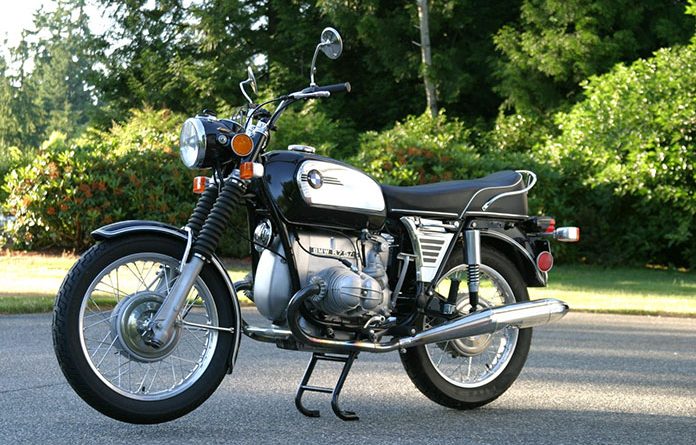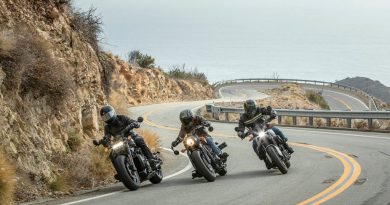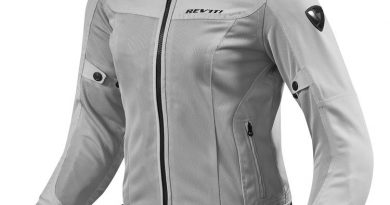Retrospective: BMW /5 Series – 1970-1973
The year 1969 was a tumultuous time in the motorcycle industry, marked by the rise of the Japanese and the beginning of the end for the British. Amidst this backdrop of rapidly evolving consumer sentiment, BMW introduced its /5 (“slash five”) Series for the 1970 model year. In its three years of production, the /5 family of motorcycles reinvigorated the brand with its contemporary design and ushered in BMW’s fabled “Airhead” Type 247 Boxer Twin engine, variations of which would continue to propel the marque’s R-Series motorcycles for the next 25 years.
See more of Rider‘s Retrospective motorcycle stories here.
The /5 Series, built at BMW’s newest facility in Spandau, Berlin, was available in three variants. The R 50/5 (500cc) was the most affordable, the R 60/5 (600cc) was the midrange, and the R 75/5 (750cc) was the top of the line.
Compared to its predecessor, the BMW /2 Series, the /5 Series was a thoroughly modernized ground-up redesign. It boasted up-to-date 12-volt DC electrics complete with a 180-watt alternator, an electric starter, more powerful drum brakes, and a slew of other noteworthy upgrades. The frame was of tubular steel construction with a double downward cradle for the engine, similar to the benchmark Norton Featherbed. A rear subframe was bolted onto the mainframe and served as the upper mount for the twin rear shocks. Up front, the former /2’s Earles fork was replaced with a telescopic fork on the /5, signaling a functional change of focus from utilitarian sidecar duty to improved handling as a solo motorcycle.
See all of Rider‘s BMW coverage here.
Of course, no discussion of the BMW /5 would be complete without an examination of the Type 247 “Airhead” flat-Twin engine. Special care was taken by the company to design a simple, reliable motor that addressed previous concerns about the /2 mill. To this end, the 247’s chain-driven camshaft runs below the crankshaft, allowing gravity assist of oil delivery to the camshaft and eliminating the periodic complete teardowns required to maintain the former /2 design’s “oil slingers.” Two valves in each hemispherical cylinder head are actuated by the camshaft through followers, pushrods, and rocker arms. A stroke of 70.6mm is constant within the /5 line, with bores of 67mm, 73.5mm, and 82mm determining the displacement of the R 50/5, R 60/5, and R 75/5 respectively.
The R 50/5 and R 60/5 models are equipped with 26mm Bing slide carburetors, while the R 75/5 features 32mm Bing CV units. On all models, the engine power is transmitted via a single-disc dry clutch to a stout 4-speed gearbox and then to the swingarm-mounted final drive via shaft.
For late 1973 models, BMW lengthened the rear swingarm by approximately 2 inches, resulting in the so-called “Long Wheelbase” /5. The tell-tale signs of a Long Wheelbase model are the weld marks on the final-drive side of the swingarm where the extension was added by the factory. The extra room allowed a larger battery to be located behind the engine and gave riders some additional clearance between their shins and the carburetors. To this day, /5 enthusiasts viciously argue over whether the sharper handling merits of the original short-wheelbase models trump the high-speed stability of the long-wheelbase versions.
Either way, at barely over 460 lb, the R 75/5 was one of the lightest 750cc bikes of the era, and with a top speed of 109 mph, it was one of the fastest as well.
Complementing these functional upgrades to its new motorcycle line, the /5’s aesthetics were also a spicy departure from the more somber BMWs of yore. Although initially available only in the white, black, or silver colors for 1970-71, the 1972-73 models were available in seven hues, including Monza Blue and Granada Red. Further shocking traditionalists, 1972 saw the introduction of the 4-gallon “Toaster” gas tank, which featured prominent chrome accent panels on each side. Though excessive chrome on a BMW was heresy at the time, today the Toaster-tank /5 is considered valuable to collectors, as it was only produced for the 1972-73 model years.
Contrary to the initial worries from BMW traditionalists that the company had strayed too far from its function-over-form roots, the /5 motorcycle family has earned a sterling reputation for anvil-like reliability. Being classic European motorcycles, the /5s naturally have certain idiosyncrasies, but overall, the design and construction are robust. In a testament to their supreme quality, these motorcycles are still often used as daily runners 50-plus years after their initial production.
Experienced owners claim that with timely maintenance, these bikes are nearly indestructible. In fact, properly running /5s with well over 100,000 miles on them are commonplace at BMW rallies worldwide. I met an owner of one, the late Fred Tausch, at a rally in 2004. Tausch’s 1970 R 60/5 had more than 600,000 miles on its clock and was still running when its owner passed away. Details are sketchy, but supposedly the engine was only overhauled twice during this remarkable service run.
The classic BMW motorcycle community is an active one, with abundant technical support and a well-organized network of enthusiasts (aka “Airheads”) who gather regularly to celebrate their favorite machines. Parts are still plentiful, though they’re getting more expensive as time goes on.
Ultimately, the /5 Series represented an initially dramatic but ultimately triumphant gamble for BMW. These motorcycles were not the cautious evolutions of the existing /2 designs that the brand’s faithful fans had expected. The /5’s newfound emphasis on performance and style, combined with significant price increases over the /2 Series it replaced, could have easily spelled marketplace doom. Luckily, that was not the case, and the /5s became a mild hit.
The post Retrospective: BMW /5 Series – 1970-1973 first appeared on Rider Magazine.



